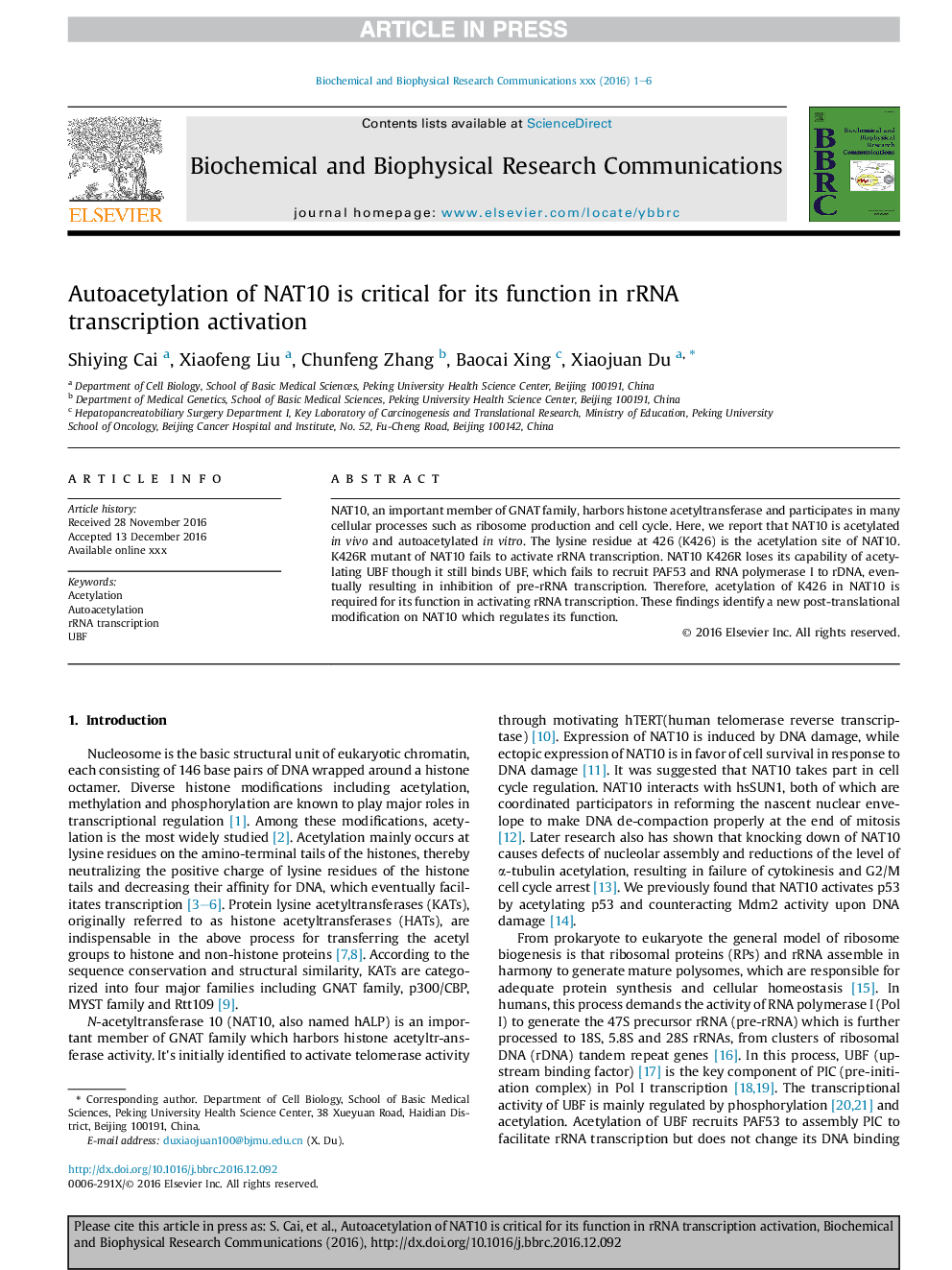| Article ID | Journal | Published Year | Pages | File Type |
|---|---|---|---|---|
| 5505643 | Biochemical and Biophysical Research Communications | 2017 | 6 Pages |
Abstract
NAT10, an important member of GNAT family, harbors histone acetyltransferase and participates in many cellular processes such as ribosome production and cell cycle. Here, we report that NAT10 is acetylated in vivo and autoacetylated in vitro. The lysine residue at 426 (K426) is the acetylation site of NAT10. K426R mutant of NAT10 fails to activate rRNA transcription. NAT10 K426R loses its capability of acetylating UBF though it still binds UBF, which fails to recruit PAF53 and RNA polymerase I to rDNA, eventually resulting in inhibition of pre-rRNA transcription. Therefore, acetylation of K426 in NAT10 is required for its function in activating rRNA transcription. These findings identify a new post-translational modification on NAT10 which regulates its function.
Keywords
Related Topics
Life Sciences
Biochemistry, Genetics and Molecular Biology
Biochemistry
Authors
Shiying Cai, Xiaofeng Liu, Chunfeng Zhang, Baocai Xing, Xiaojuan Du,
